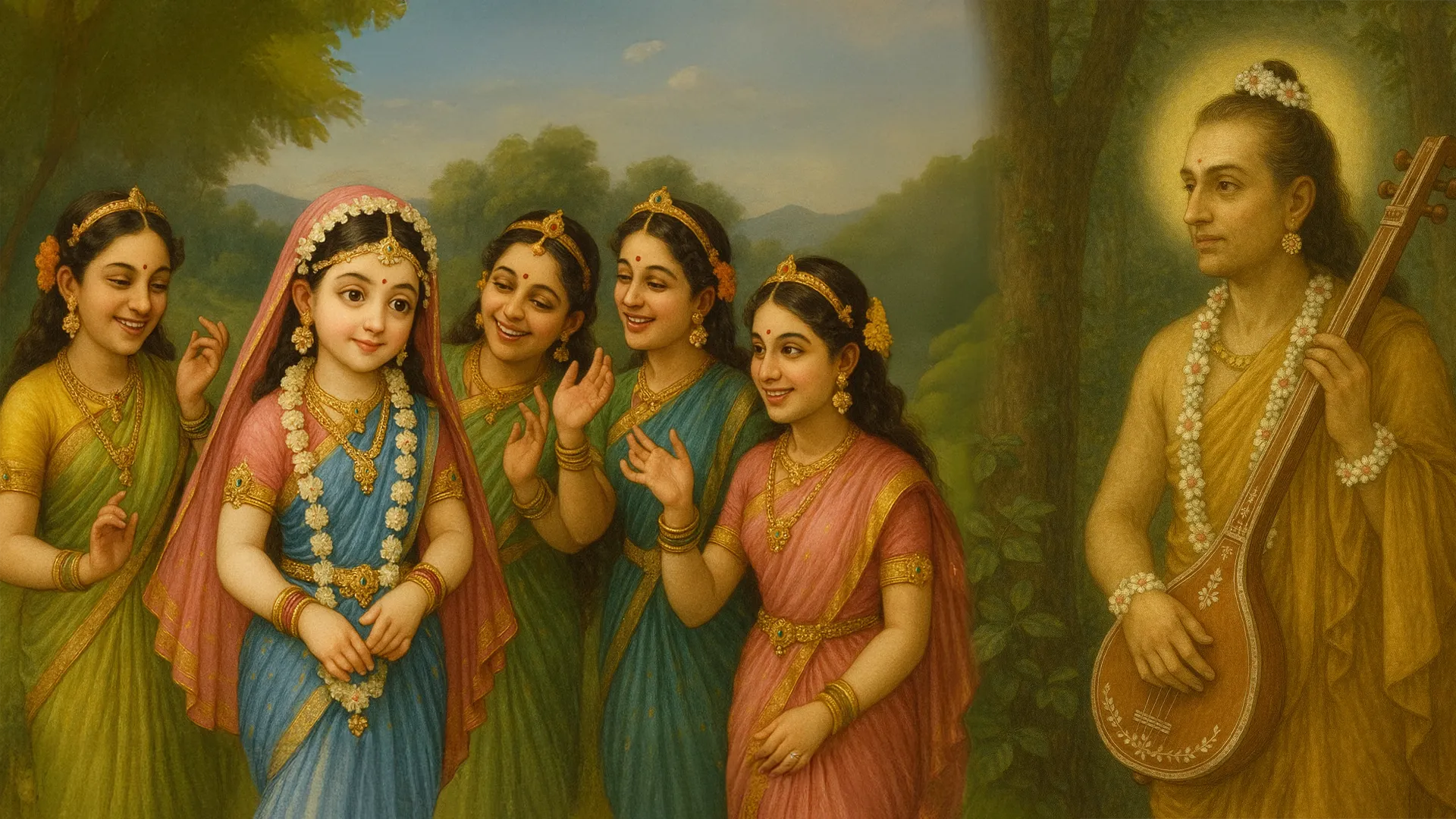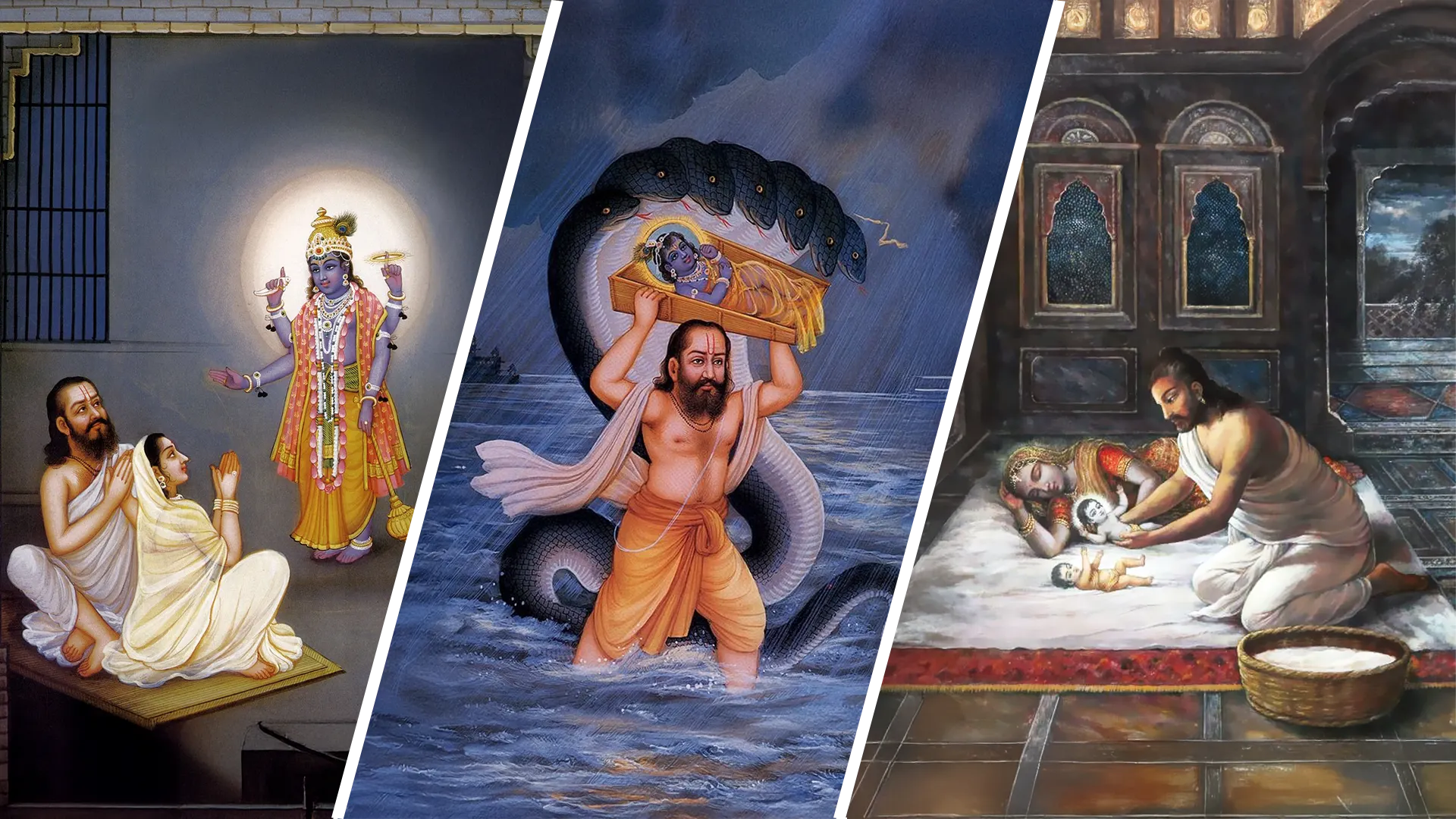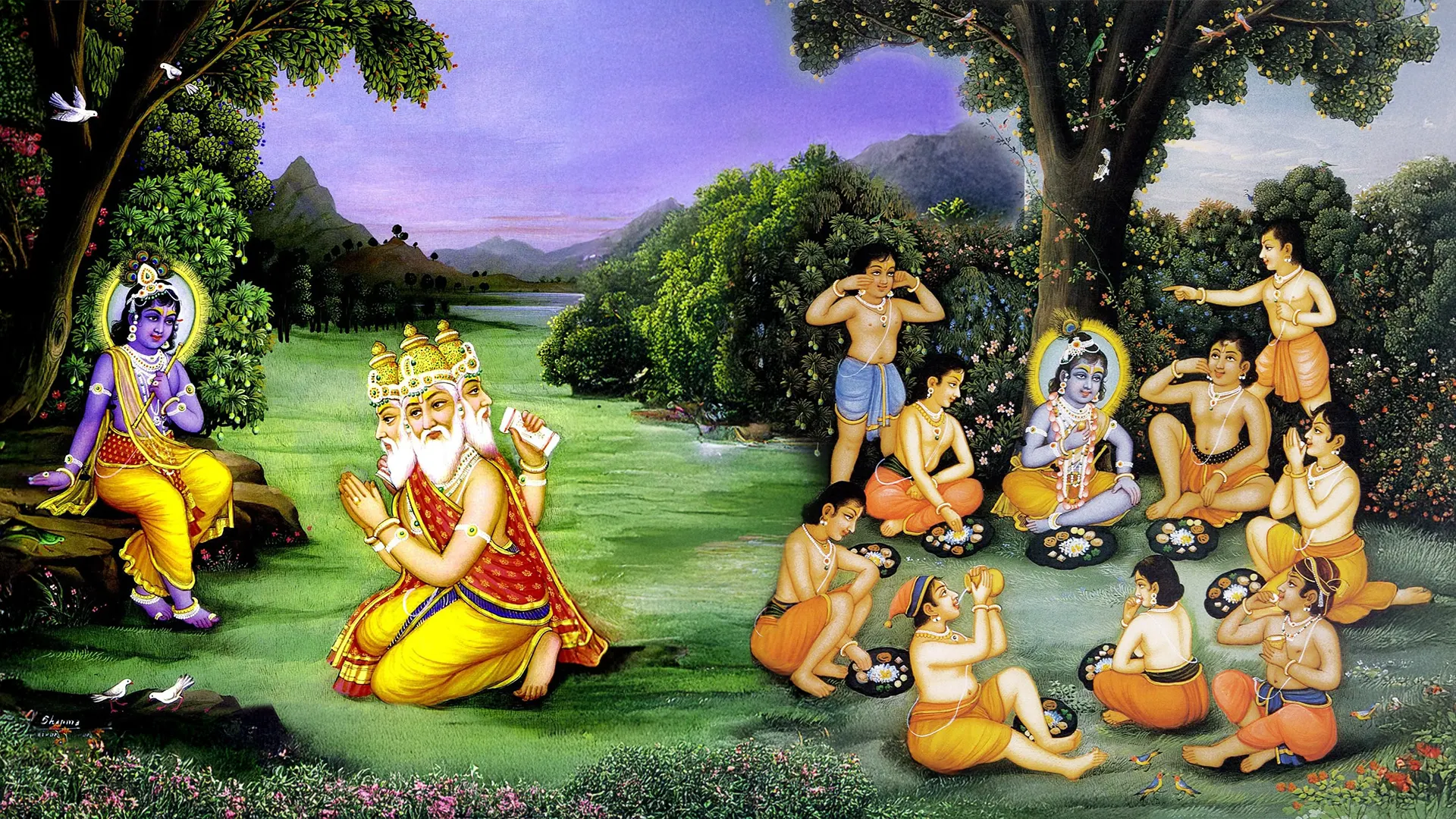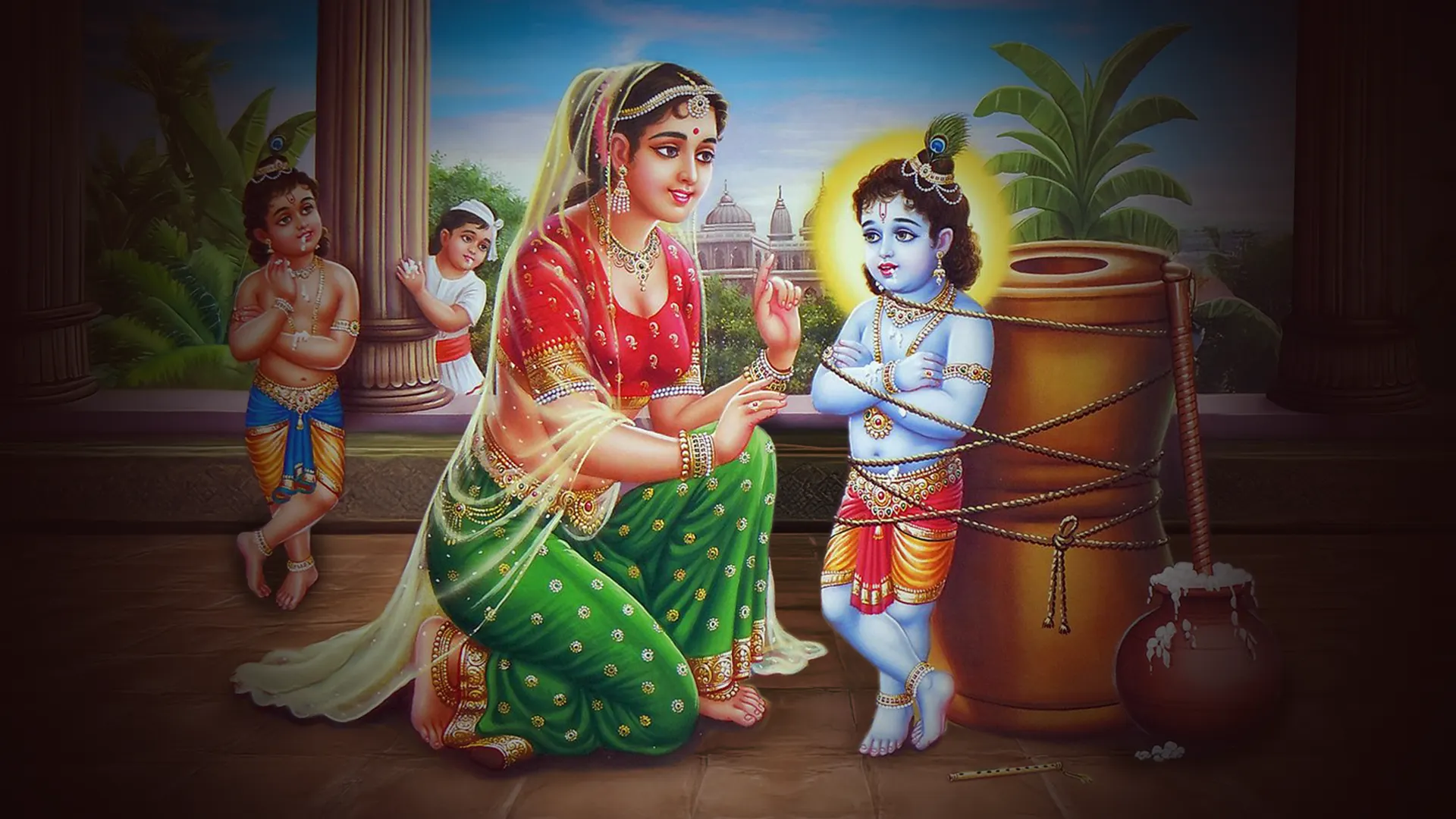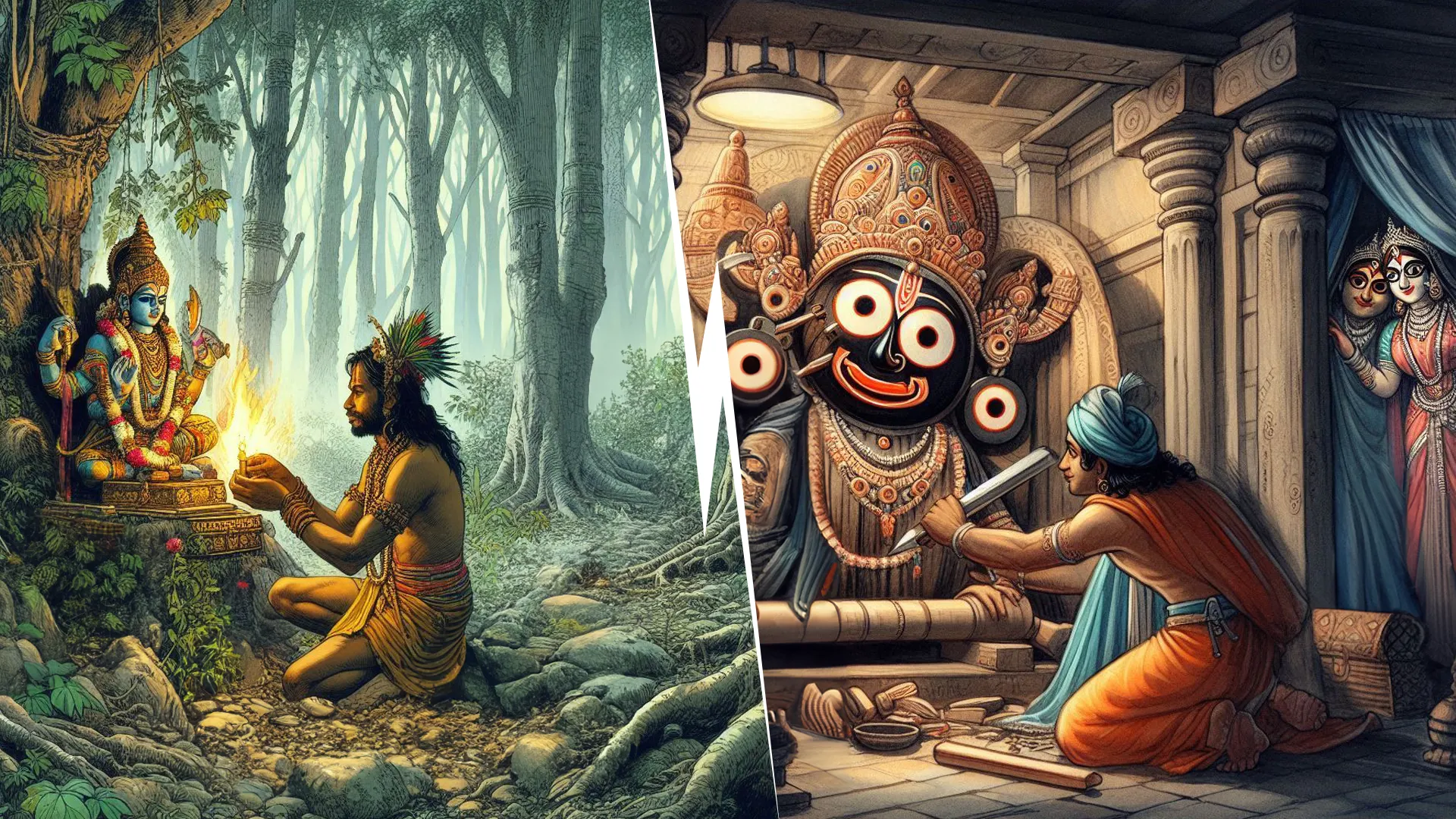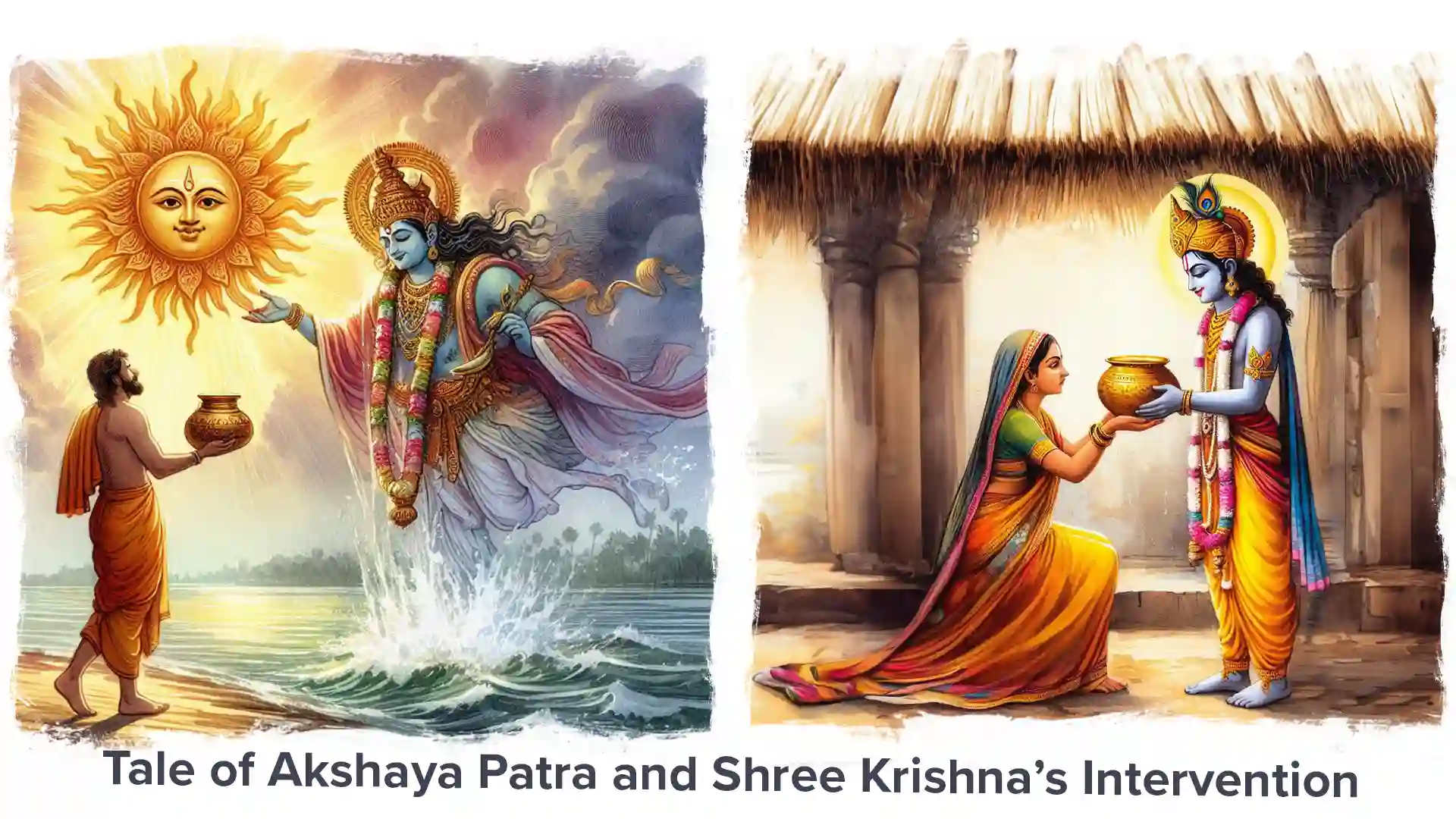Before we immerse ourselves in the nectar of Shree Radha’s divine leelas, let us first reflect upon the very name Radha. In the Sanskrit language, the word Radha springs from the root that means ārādhana—worship, and upāsanā—devotion. Within this sacred word lies a wondrous secret: it carries two seemingly opposite, yet equally true meanings.
On one hand, Radha means She who worships Shree Krishna, the Supreme Brahman. On the other, Radha means She who is worshipped by Shree Krishna Himself. Thus, Radha is both the supreme devotee and the supreme deity. She worships Krishna as Her all-in-all, and Krishna worships Her as the embodiment of the highest love. This divine paradox reveals the essence of Radha: the eternal, inseparable counterpart of Krishna, where worshipper and Worshipped lose all distinction.
Just as Shree Krishna descends in Kansa’s prison only to be carried to Gokul, in the same way Radhaji’s appearance is enveloped in leela. Scriptures narrate two beautiful versions of Her birth. One tells us that She manifested in the house of Vrishabhanu, appearing to be born from the womb of Mata Kirti, much like Krishna appeared to be the son of Devaki. The other describes how Vrishabhanu, while walking in the fields, discovered Her upon a radiant lotus, just as King Janak found Sita Mata.
Which of these is true? Both. For Radharani’s descents are eternal and manifold—nānā-bhānti avatārā—She manifests again and again, to grace the world with the sweetness of divine love.
And just as in this present Yug we celebrate Radha and Krishna’s parakīyā rasa—their love beyond social boundaries—so too do we find another leela in the Garg Samhita. There, Brahmaji himself performs the marriage of Radha and Krishna in the serene forests of Bhandira Van, sanctifying their eternal union in Braj.
Thus, whether as the worshipper or the Worshipped, as the child of Vrishabhanu or the lotus-born, as the beloved or the wedded consort, Radharani remains the eternal source of Krishna’s bliss, the very essence of divine love.
Radha Rani’s Childhood Leela with Devarshi Narad
One day, little Radharani went out to play with Her sakhis. The palace of Vrishabhanu was on the hill of Barsana, and nearby were the villages where the mahā-sakhis lived. These sakhis—Lalita, Vishakha, Tungavidya, and others—had all descended with Radharani into this world, only to sweeten the pastimes of Radha Krishna here in Mrityulok.
While they were playing, something unusual happened, something that had never happened before in Radha’s life. Little Radha became so disturbed that She came running home to Her mother.
Kirtimaiya was cooking in the kitchen. Radha rushed in, tugging at Her mother, "Maiya, listen to me, listen to me!” But Kirtimaiya was busy. Radha climbed onto her lap, held her chin and forehead, and said, “Maiya, look at me! Listen carefully!”
Kirtimaiya smiled but grew worried. She said, “Ari Laali, what has happened? Why are you so anxious? Has the sky fallen on your head? Tell me, my child.”
With all Her innocence, Radha began narrating, "Maiya, today, while I was playing with Lalita and the others, a Baba came there, holding a veena in his hand.”
Kirtimaiya said, “He must have just been going by.”
But Radha insisted, “No, Maiya. When he saw us, he stopped. And then, he didn’t look at anyone else—neither Lalita nor Vishakha—he kept looking only at me. And Maiya, tears started flowing from his eyes.”
This Baba was none other than Devarshi Narad. He had never expected to have Radha’s darshan in this way. Overwhelmed with bhakti, tears streamed from his eyes.
But Radha, being a little child, did not understand. She continued, “Maiya, he came close, and then he started going around me. Once, twice, seven times! And all the while, he was chanting ‘Radhey… Radhey… Radhey…’ But Maiya, I couldn’t understand. Why was this Baba going round and round me? What did I do wrong? Has he gone mad?”
Now imagine—Naradji, such a great devotee, taking parikrama of little Radha, chanting Her name. But Radha Herself was so innocent that She could not understand what was happening.
Then Radha said, “Maiya, when he finished circling me, I stepped back. Do you know what he did then? He scooped up the mud where I had been sitting—the dust of my feet—and he put it in his mouth! He ate it, Maiya!”
Kirtimaiya was astonished. But Radha, puzzled, said, “Maiya, surely he must be a madman. Who else would eat mud like that?”
The saints tell us Narad was longing for the pādaraj of Radha. Even Mahalakshmi desires it. The Radhikopanishad itself declares:
सांशा कमला शैलपुत्री तां राधिकां शक्तिधात्रीं नमामः ।
sāṁśā kamalā śailaputrī tāṁ rādhikāṁ śaktidhātrīṁ namāmaḥ
Meaning: The great goddesses Uma, Lakshmi, and Brahmani are all but partial manifestations of Radha. Again and again, we bow to Shree Radha, the Supreme Shakti.
So if Narad desires that dust, what is surprising?
Radha continued, “Maiya, after eating that mud, he began doing balaiya of me, just like you do sometimes. And then, instead of answering Lalita’s questions, he laughed loudly—attahasa!—and suddenly ran away, as if somebody was pushing him out!”
Narad was overwhelmed, exhibiting all eight sattvik bhavs—crying, laughing, trembling, and running. Radha, in Her innocence, told Her mother, “Maiya, don’t you think he was a madman?”
Kirtimaiya, however, had now understood. She realised this was no ordinary Baba. This was none other than Devarshi Narad, the saint among the devas, the great devotee of Shree Hari.
But how could Radha Herself know? For in leelas, Krishna forgets that He is God. And Radha forgets that She is the Supreme Goddess. Otherwise, how would these sweet, childlike leelas be possible?
Through this one leela, Jagadguru Shree Kripaluji Maharaj reveals to us the astonishing greatness of Radha—how even Narad, the guru of Veda Vyasa, longs for the dust of Her feet. At the same time, He shows us the innocent sweetness of Radha’s childhood pastimes.

